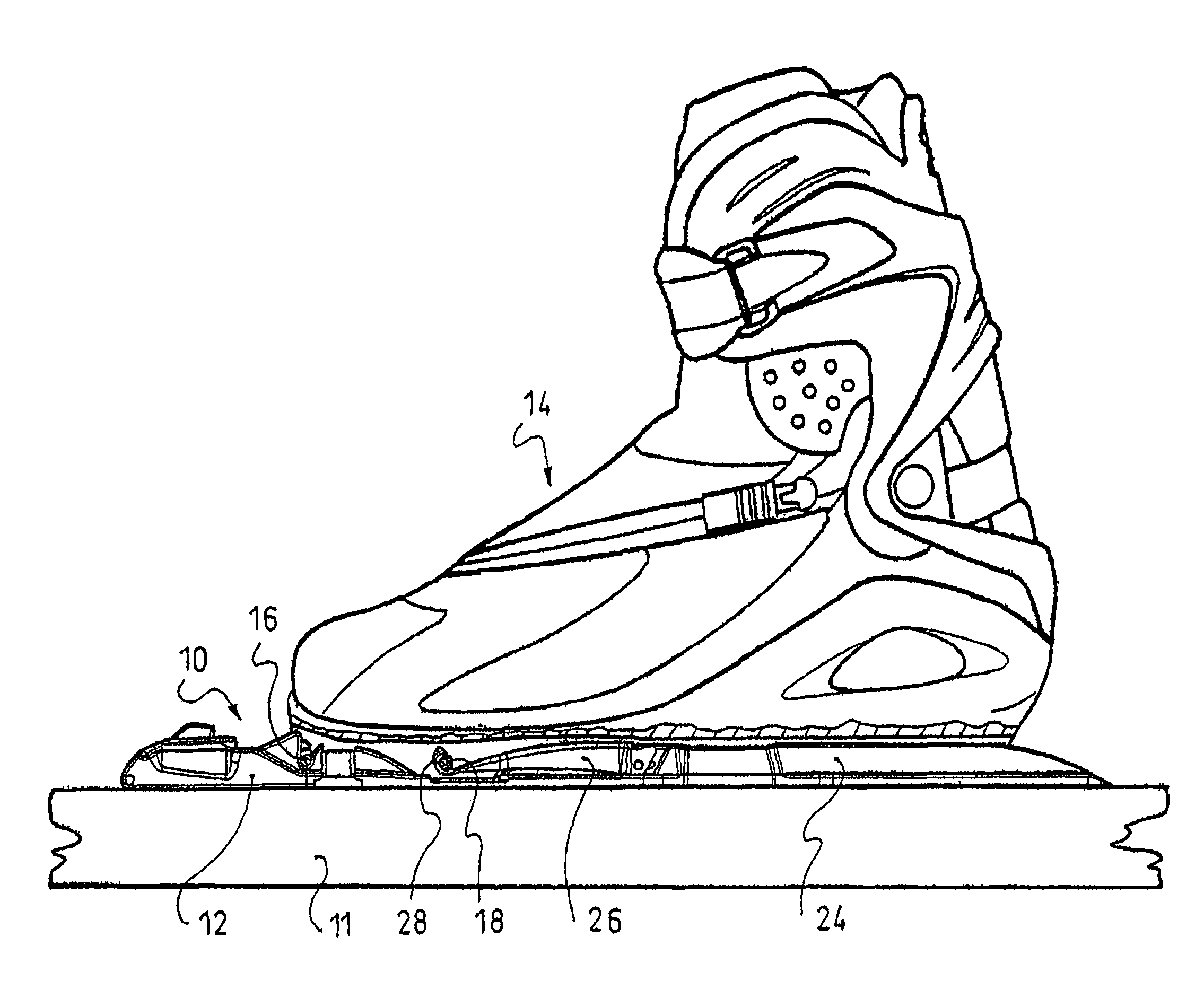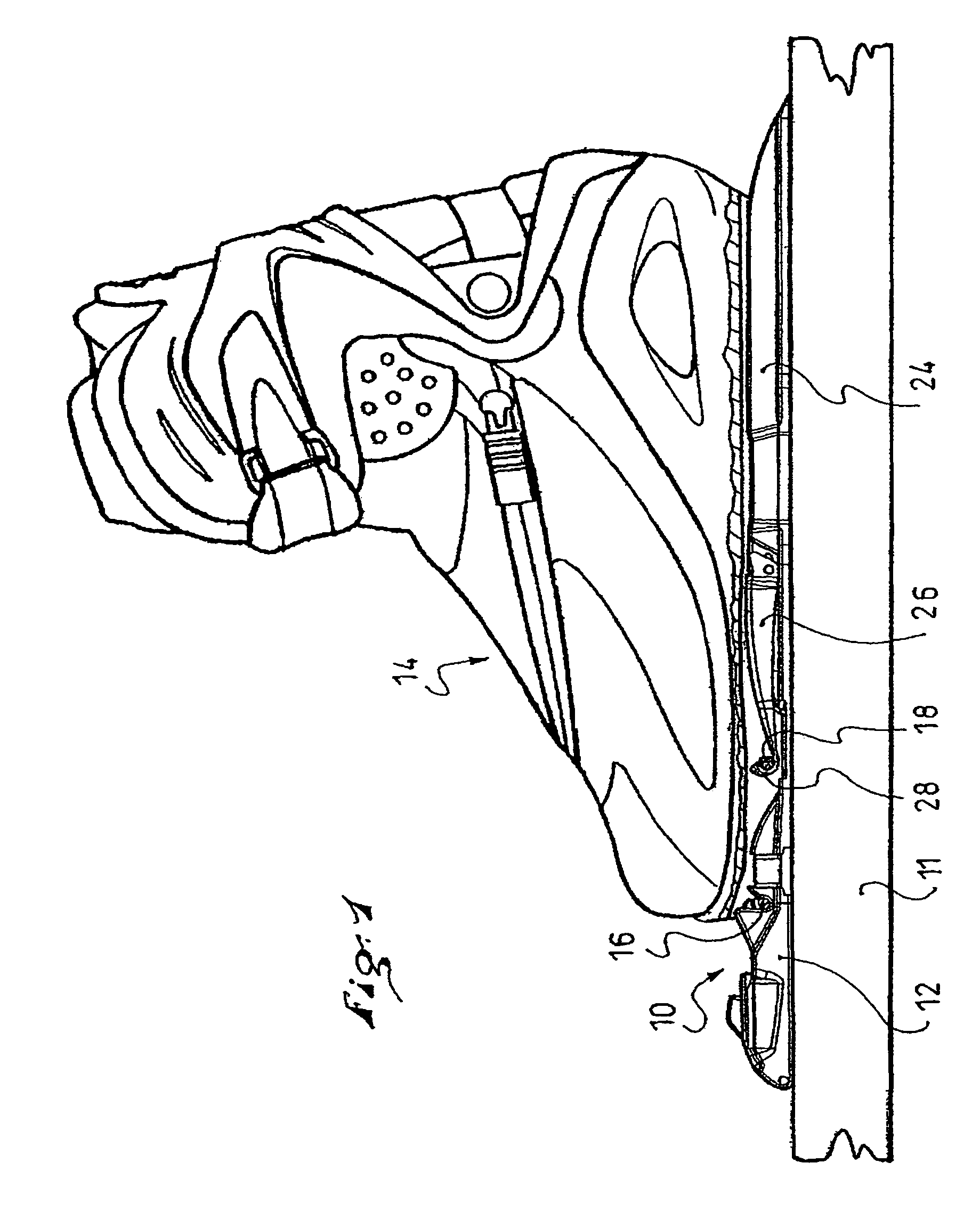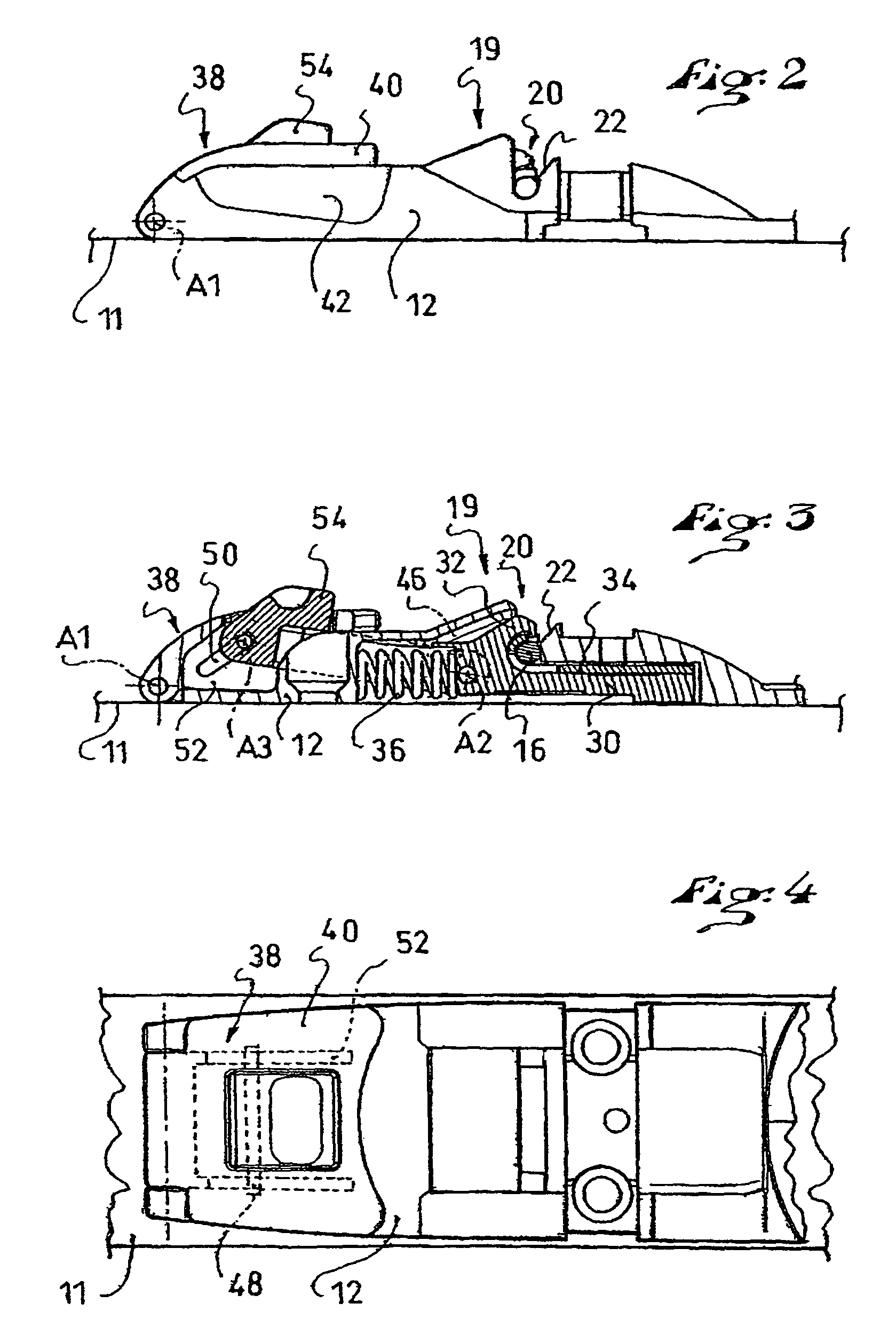Dual-control binding device
a binding device and dual-control technology, applied in the direction of ski bindings, sports apparatus, skiing, etc., can solve the problems of not being easily usable by another person, the binding system is particularly difficult to manipulate by its user, and the binding system is not sufficiently ergonomic, etc., to achieve the effect of low manufacturing cos
- Summary
- Abstract
- Description
- Claims
- Application Information
AI Technical Summary
Benefits of technology
Problems solved by technology
Method used
Image
Examples
first embodiment
[0034]a binding 10 shown in FIGS. 1 to 6 includes a baseplate 12, or base, which is adapted to be fixed to a sports article 11, here a ski, but which could also be directly integrated or made in one-piece with the ski. The baseplate 12 could also be made of different parts, some or none of these parts possibly being integrated to the sports article / ski 11.
[0035]In the example shown, the device is adapted to carry out the binding of a boot 14 including connecting means in two parts. The boot includes two connecting pins 16, 18, which are arranged in the boot sole so as to be flush below the sole. Connecting pins 16, 18 of this type are described in the patent documents EP-913 102, EP-913 103, and U.S. Pat. No. 6,289,610, the disclosure of U.S. Pat. No. 6,289,610 being herein incorporated by reference thereto in its entirety for this purpose. Thus, in the particular embodiment being described here, the pins take the form of two cylindrical rods positioned within the sole but extending...
third embodiment
[0062]the invention is shown in FIGS. 10 to 12, in which the system for opening the locking mechanism includes only one control member. As illustrated in the drawings, the system is identical to the preceding one, except that the lever and the rocker are made as one and only piece: the rocker 78 articulated on the baseplate 12 about the axis A4, and which includes an upper support surface 68 arranged rearward from the axis A4, on the one hand, and front prehension arrangement (i.e., the member 76) arranged forward from the axis A4, on the other hand, and so as to trigger the same tipping move of the rocker 78, the user can choose to downwardly push on the rear surface 68, or to upwardly pull the front prehension member 76. In either case, the rocker revolves about the axis A4 and, by means of a control finger 72, controls the forward translation of the slide 30.
[0063]The fourth and fifth embodiments of the invention shown, respectively, in FIGS. 13-15 and in 16-18, also include a si...
fourth embodiment
[0065]In the fourth embodiment shown in FIGS. 13 to 15, the lever includes at its rear end a cam 92, which is arranged about the axis A5 and is adapted to be supported against the rear support surface 60 of the raised nose 58 arranged at the front of the slide 30. The eccentricity of the cam 92 is such that when the user triggers the lifting of the lever 80 by pulling its front end upwardly, the lever 80 then turns about the axis A5 of the connecting rod 82, the surface of the cam 92 pushes the slide 30 forwardly (c.f. FIG. 15). The lever 80 cannot translate rearwardly with respect to baseplate 12 because the connecting rod 82 is blocked toward the rear against the rear end of the slot 84. The movement of the lever is therefore a true rotation.
[0066]When the user pushes on the support surface 68 of the lever downwardly, the pin 88 tends to slide on the inclined surface 86 so as to trigger (by a cam effect) a forward translation of the lever 80. This translation is allowed since the ...
PUM
 Login to View More
Login to View More Abstract
Description
Claims
Application Information
 Login to View More
Login to View More - R&D
- Intellectual Property
- Life Sciences
- Materials
- Tech Scout
- Unparalleled Data Quality
- Higher Quality Content
- 60% Fewer Hallucinations
Browse by: Latest US Patents, China's latest patents, Technical Efficacy Thesaurus, Application Domain, Technology Topic, Popular Technical Reports.
© 2025 PatSnap. All rights reserved.Legal|Privacy policy|Modern Slavery Act Transparency Statement|Sitemap|About US| Contact US: help@patsnap.com



